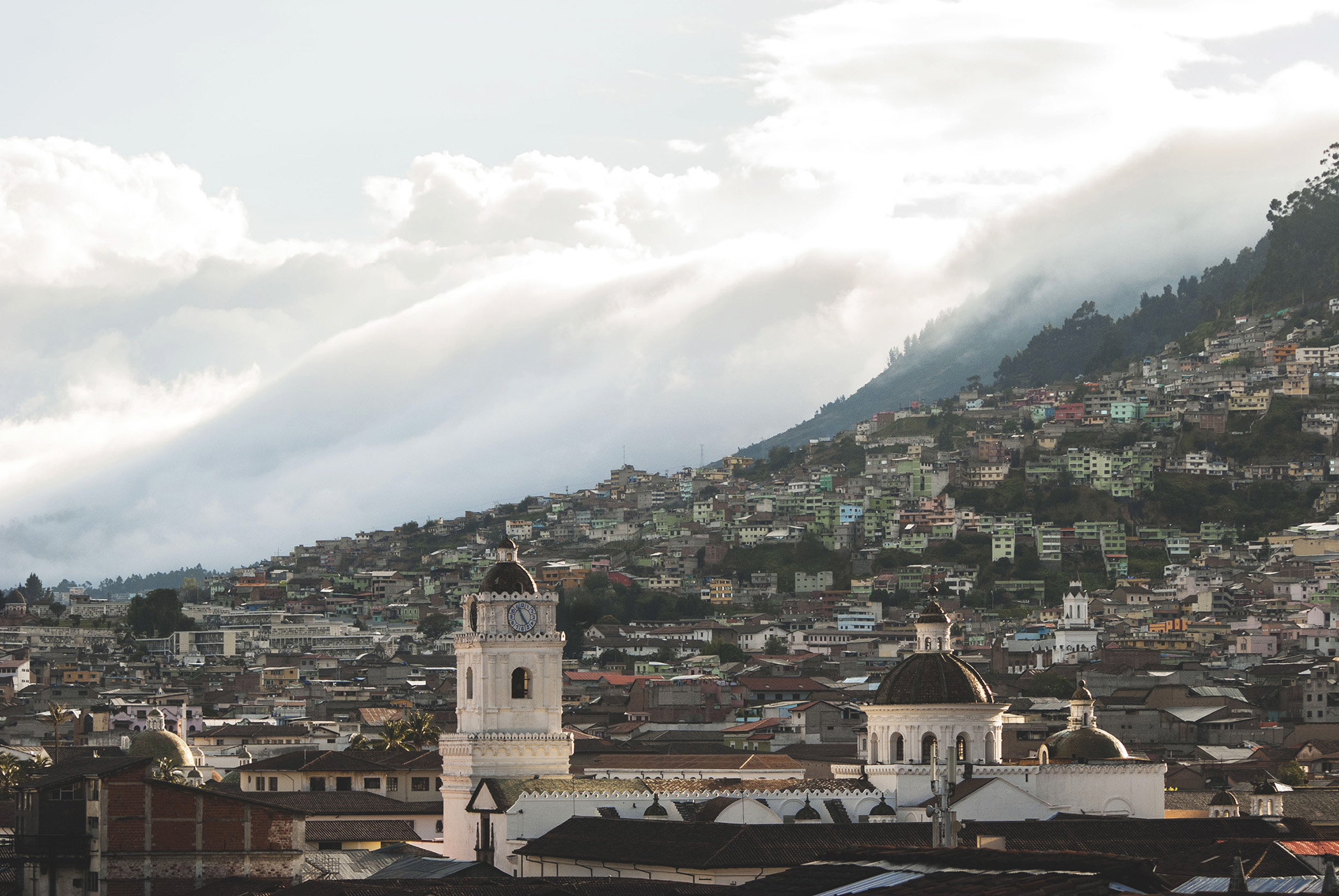Ecuador
Colonial Cities
Ecuador has two main cities whose colonial historic centres are listed as a UNESCO World Heritage Site, QUITO and CUENCA. Nestled in the Andes mountains both cities represent the best of urban Ecuador. Both have a wealth of fine museums, beautiful churches, lovely plazas, and several other tourist attractions.
Listed as a UNESCO World Heritage Site, Quito – the capital of Ecuador – is a city full of flavors. Colonial buildings dating from the “Conquistadores” era are abundant, as evidenced by the 86 churches within it. There are many possibilities for visits during your tour/stay in Quito. Below are the main places to visit. In the capital of Ecuador, the list is far from exhaustive, as there are so many exceptional places steeped in national history. Each alley is enriched by anecdotes in store for you!
Independence Plaza
Located in the heart of the Ecuadorian colonial city, it is one of the most important squares in the city’s historic heart. You will have the opportunity to visit the Cathedral and observe the “Government Palace” (Carondelet Presidential Palace). The Republic President’s Guard changing is also a tradition preserved to this day, which promises you a moment of emotion.
La Compañia Church
The church “la Compañia” is certainly Quito prettiest church. The sculptures are impressive and of great finesse, people’s religiousness create a warm and mystic setting. The interior is covered in gold, in a style that is quite unique and fascinating to all visitors.
San Francisco Plaza
Plaza San Francisco is one of the most imposing and historical squares in colonial Quito. It is beautifully lit at night. To visit: The San Francisco Church (first church built in Quito in 1553), as well as its convent in which a museum has been set, you will find many religious pieces on display and learn about art, legends, and the history of the people who marked the place.
Santo Domingo Plaza
In its centre stands a Mariscal Sucre statue. You can visit the Santo Domingo Church as well as its museum, built in the 17th century. Certainly, one of the most iconic Churches and Plazas in Quito Historic Center.
The Panecillo Hill
From this hill that overlooks Quito, the impressive and imposing Virgin of Quito statue rises, separating the north and the Historic Center from the southern part of the city. A breath-taking Quito view, particularly appreciable at the end of the day!
La Ronda street
One of the oldest and most traditional streets in Quito – Ecuador -, La Ronda is a narrow street lined with 17th-century colonial houses and buildings. If you want to enjoy a warm, authentic, bohemian or festive atmosphere, it is the ideal place! Lively at night, this street and its many bars and restaurants create a unique atmosphere in the city, appreciated by locals as well as travelers. In December, For Quito Festivities La Ronda is a very important theatre.
Museums
Many museums are present in Quito. The most interesting, according to your ITK travel agency, are the National Museum (MUNA) and the Guayasamín Museum – famous Ecuadorian painter -. In 2017, we also discovered a little treasure, the “Casa del Alabado Museum” dedicated to pre-Columbian art. Its owners, truly passionate about the rich history of Ecuador, have built in an authentic colonial-period house a striking space for any enthusiast of this period.
A southern Ecuadorian City with a population of 420,000 inhabitants, Cuenca is certainly the prettiest city in the country. The Cuenca Historic Center dates from the 16th century and is also listed as a UNESCO World Heritage Site. An incredible atmosphere! And while many tours will open your arms, you will just enjoy strolling through colonial buildings and historic streets. Cuenca continues to benefit from a strong contribution from European culture (German, American and French) and the influence of foreign communities is felt strongly and positively at a gastronomic and cultural level.
El Sagrario
A peaceful place marking Cuenca Center, El Sagrario is surrounded by two cathedrals: The Magnificent Inmaculada Cathedral built in 1557 and the new cathedral built in 1885, impressive for its grandeur and its vaulted blue domes.
Aboriginal cultures museum
Small museum located near the Cuenca cliff – Ecuador – the aboriginal cultures museum has a collection of rich and atypical Inca and pre-Columbian relics.
Tomebamba River
Going alongside and walking near the Rio Tomebamba (Tomebamba river) is a real pleasure. In the direction of “El Barranco”, you will observe very beautiful colonial houses which dominate the atmosphere along the river.
The Panama Hat
Worldwide Ecuadorians pride! The production of this headgear takes place in Cuenca and in the coast region -Ecuador-, this hat is one of this southern Colonial City symbols. You will have the opportunity to visit the famous “Homero Ortega” artisan factory, and who was also a famous hat maker from Cuenca. You will find a small interactive museum where you will find in detail each step of the panama-making process, and will be able to observe the workers, most of whose workshops are outdoors or open.
















